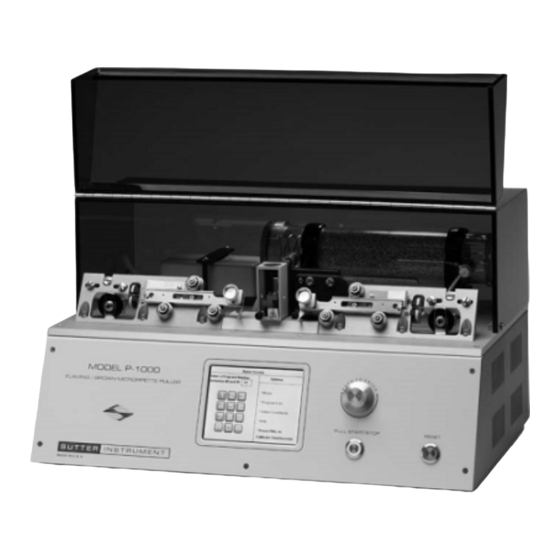
Sutter Instrument P-1000 Manuals
Manuals and User Guides for Sutter Instrument P-1000. We have 1 Sutter Instrument P-1000 manual available for free PDF download: Operation Manual
Sutter Instrument P-1000 Operation Manual (104 pages)
Flaming/Brown Micropipette Puller System
Brand: Sutter Instrument
|
Category: Laboratory Equipment
|
Size: 4 MB
Table of Contents
Advertisement
